Often called the Champagne of beers, just why is Miller High Life so cheap? It might not be a Heady Topper or the ultra-hoppy Sierra Nevada, but High Life is a favorite brew for many beer lovers. Beer aficionados often say it’s the beer Budweiser should have been!
Let’s take a quick look at the history of this once flagship beer of the Miller Brewing Company and find out how it got relegated to being one of the USA’s budget-friendly beer options. Was it just Frederick Miller’s ambition of providing quality beer for the masses which kept this delicious beer at such an inexpensive price, or have other factors such as the rise of the light beer market played a part too?
Miller High Life: The Early Days
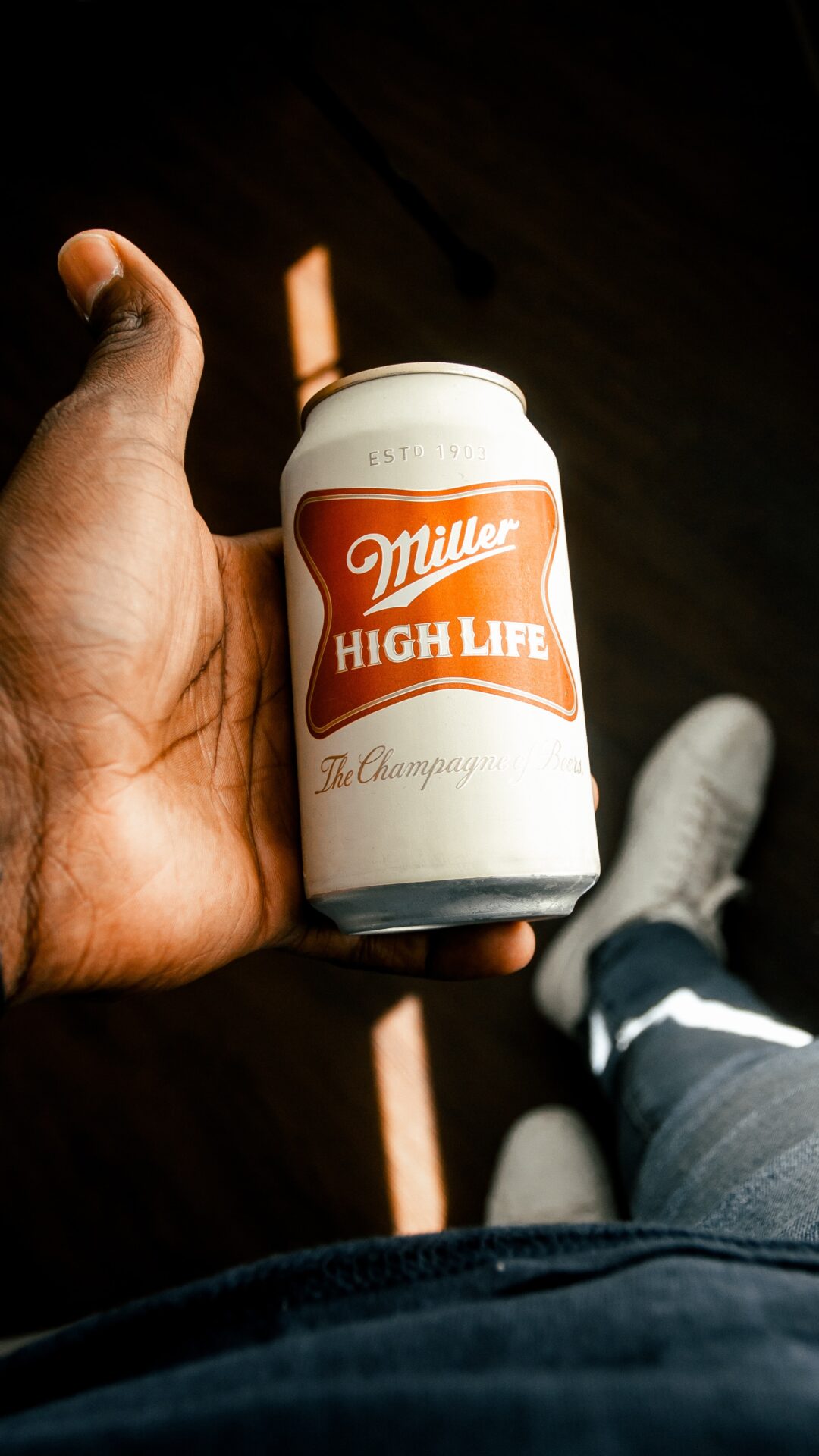
Miller High Life is one of the oldest beers in America still produced today and was first introduced in 1903 (it’s not the oldest beer in the USA today, that honor goes to Yuengling Traditional Lager). However, it wasn’t the first beer produced by the Miller Brewery, the company which had been established by Frederick Miller in Milwaukee around 1854.
High Life wasn’t introduced as a cheap beer though, rather it was marketed as a “Gentleman’s” beer of choice. At the beginning of the 20th Century, and especially prior to 1903, it was not too common for beers to be served in bottles in the bars of the time. Rather, beer lovers would consume beer on draught and would often turn up at the breweries with their own metal pails if they wanted to take some beer to enjoy at home.
Miller High Life was launched around New Year’s Eve 1903 and came in a distinctive clear bottle with a tapered neck similar to those in which Champagne was traditionally served. Furthermore, the bottles would often come topped with a gold foil (and occasionally still do for special commemorative editions) similar to a Champagne stopper. The bottles would also be served in Champagne buckets of ice in the bar to be kept chilled.
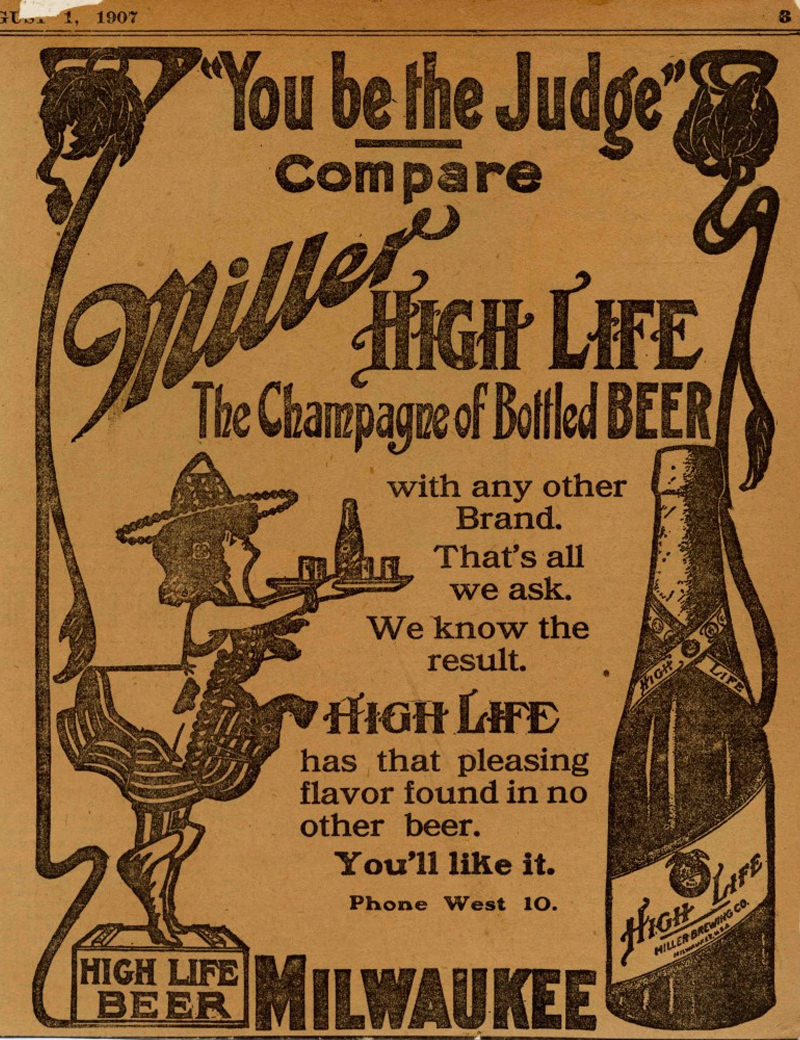
Others would argue it was the clear golden color of the beer and its effervescent nature which earned High Life the name “The Champagne of Beers”.
Whatever the reason, Miller High Life quickly established itself as a premium lager and certainly not a low-quality beer. For the last 120 years, Miller Brewing Co, or whoever their owners at the time were, has been using the “Champagne of Bottled Beer” slogan to market this popular beer (the “bottled beer” part of the moniker was dropped in 1969 and it became just the “Champagne of Beers”).
Is Miller High Life a “Champagne-Style Beer”?
No, certainly not. The brewing process for Miller High Life is the same as all other Miller beers and, in general, macro lagers of the US. High Life uses the same 5 basic ingredients found in many other adjunct lagers of the US including water, barley, hops, yeast, and corn syrup or maltose.
Miller High Life still uses the same strain of Miller yeast that Frederick Miller was carrying when he arrived in America in 1850, and, yes, High Life does use hops. In fact, the Galena hops used in High Life were specially bred to be light-stable hops by Miller brewers in the 1930s to avoid the skunky aroma often associated with beer in clear glass bottles.
High Life is definitely a beer and a pretty damn good one at that. Miller High Life is often said to be the bartender’s favorite beer (and they should know a thing or two about beers), and when asked to name their favorite macro lager of the US, many craft brewers often say Miller High Life (for example – Kyle Vetter, founder of the 1840 Brewing Company, also in Milwaukee, or Eric Tennant, head Brewer at Benchtop Brewing Company, Norfolk, VA.).
High Life has no characteristics of Champagne at all, it’s fermented as beer using a proprietary bottom-fermenting yeast compared to Champagne which uses a specialized Champagne yeast. With an ABV of just 4.6%, it has just over a third of the alcoholic content of Champagne.
Although a Premium beer, High Life certainly has no grapes in it, and High Life is not produced in the Champagne region of France, where officially a beverage must be produced to be called Champagne under strict European appellation de origin rules.

Instead, the Champagne nickname has been used very effectively over the years as a marketing tool that positioned what is really a “working-class beer” in the premium end of the beer market.
It’s not been without its troubles though. As recently as February 2023 European bureaucrats ordered the destruction of over 2,500 cans of Miller High Life at the request of the French Champagne committee, who disapproved of the use of the slogan “Champagne of Beers”.
In what seemed like a crazy move, US consumers took to social media to vent their outrage and confusion. One tweeter even commented “If the Champagne Industrial Complex is worried that they will be confused with Miller High Life – the “Champagne of beers” – they clearly haven’t tried one.”. They say “No publicity is bad publicity”, and the amount of PR High Life gained from such media coverage certainly helps keep the cost of marketing down.
When Did Miller High Life Become a Cheap Beer?
Although High Life was originally marketed as a premium beer with a somewhat premium price, the “gentleman’s beer of choice”, today Miller High Life is seen as an economy brand.
During World War II and the period shortly after, when beer ingredients such as barley malts were limited, the Miller Brewing Co turned all their production to only brewing Miller High Life, which further cemented its position as a popular middle-class or working-class beer. Frederick Miller was keen to emphasize that quality beer should be available to all, even though Miller High Life was never the cheapest beer on the market.
When the Philip Morris Company acquired Miller in 1969, Miller High Life was still seen as a premium beer and was the flagship beer of the Miller Empire. They even launched a successful advertising campaign reminding passionate beer connoisseurs that it was “Miller Time”.
That was all to change in the late 1970s with the rise of the light beer market, kickstarted ironically by another Miller brand, Miller Lite. Along with the rise of light beers and the growing emergence of other national conglomerates like Budweiser and Coors, Miller High Life was soon relegated to the bargain bins of the 7/11s and other large retailers.
The Repositioning of Miller High Life
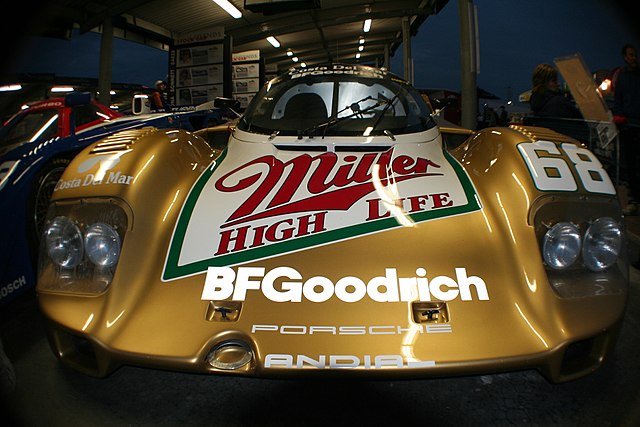
Unable to ignore the changes in the American beer market and the growth in popularity of craft beers too, Miller had to change the dynamics of their Miller High Life marketing for the beer to maintain its presence in the American beer market.
The beer itself hadn’t changed, it still used the same quality ingredients, the original Miller yeast, and the same brewing process, but it was no longer the number one selling beer. High Life wasn’t even the number one selling beer in the Miller portfolio of beers, as it trailed behind other popular beers such as Miller Lite and Miller Genuine Draft.
Miller High Life’s marketing strategy is a key component of its success in maintaining a low price point while still appealing to a wide consumer base. The brand has adopted several effective marketing tactics to maximize its reach and generate strong brand recognition.
Miller High Life positions itself as the beer for the everyday working person, often using slogans such as “The Champagne of Beers” and “A True American Classic.” This positioning appeals to consumers looking for an affordable option that still offers a satisfying drinking experience. By associating the brand with quality and value, Miller High Life establishes a unique identity in the market, setting itself apart from both premium and budget beer brands.
Miller High Life employs targeted advertising to reach its desired consumer demographic. The brand focuses on advertising channels that resonate with its target audience, including television, radio, online platforms, and social media.
By carefully selecting these channels, Miller ensures that its marketing messages reach the right people at the right time. The advertising campaigns often highlight the brand’s affordability, accessibility, and ability to bring people together, fostering a sense of camaraderie and celebration.
Sponsorships and Partnerships
Miller High Life strategically engages in sponsorships and partnerships to increase brand visibility and connect with its target market. The brand often sponsors sporting events, music festivals, and other cultural gatherings that attract its desired demographic.
This strategy helps Miller High Life reach consumers in their leisure and social settings, reinforcing the brand’s association with enjoyable experiences. By aligning itself with events that embody the spirit of camaraderie and celebration, Miller High Life strengthens its brand image and cultivates a sense of community.
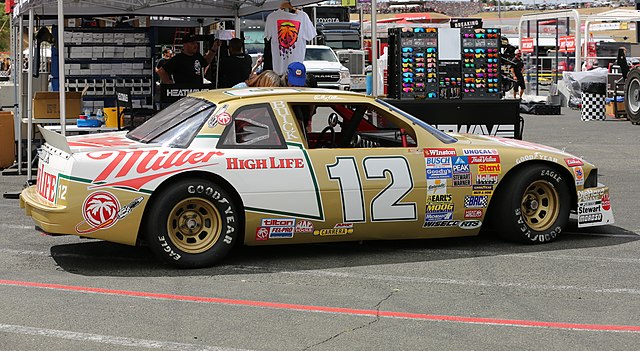
Promotional Campaigns
Other key factors in the lower price scale of Miller High Life are the special promotions, discounts, and limited-time deals to entice consumers and drive sales. These campaigns may include price discounts, bundled deals with other products, or incentives such as branded merchandise or event tickets. By leveraging these promotions, Miller High Life creates a sense of urgency and attracts new consumers while rewarding its loyal customer base.
Engaging Social Media Presence
In more recent years with the widespread popularity of the internet, Miller High Life has actively maintained a vibrant presence on social media platforms, leveraging these channels to engage with its audience and amplify its brand message.
The brand’s social media strategy focuses on creating engaging content that resonates with consumers, such as humorous and relatable posts, behind-the-scenes glimpses into the brewing process, and interactive contests or giveaways. By fostering a sense of community and interaction, Miller High Life strengthens its brand loyalty and encourages consumers to share their experiences with the beer.
Is Miller High Life Cheaper to Produce?
To maintain the cheap cost of a quality beer, sometimes you have to question just how can they make a beer so cheap. With the rising costs of ingredients and the inflation crisis of recent years, it’s often cheaper to buy the cheapest beers on your local 7/11 shelf than to homebrew a quality beer at home (well, almost!).
The answer lies in the scale of production of a beer such as Miller High Life and the cost-effective ingredients used by the brewing company.
As part of the Molson Coors Empire, the sheer scale on which Miller Brewing now operates allows for Miller High Life to leverage economies of scale as a significant factor in its affordability. Economies of scale refer to the cost advantages that arise from increased production volume.

With a vast production scale, Miller High Life benefits from the ability to make bulk purchases of raw materials, such as grains, hops, and yeast. By purchasing these ingredients in large quantities, the brand can negotiate better prices with suppliers, taking advantage of discounts and favorable terms.
Large-scale production enables Miller High Life to streamline its brewing processes, optimizing efficiency and reducing costs. The company invests in modern brewing technology and equipment that can handle high production volumes while maintaining quality standards. Automated systems and standardized procedures minimize waste, increase production speed, and enhance overall efficiency. These streamlined processes help reduce labor costs, energy consumption, and raw material waste, resulting in lower production expenses.
Miller High Life’s extensive distribution network is another aspect of economies of scale that contributes to its affordability. The brand’s products are widely available across the United States due to partnerships with numerous retailers, including grocery stores, convenience stores, and bars. This efficient distribution network reduces transportation costs and ensures the availability of Miller High Life in numerous markets, contributing to its cheaper price tags.
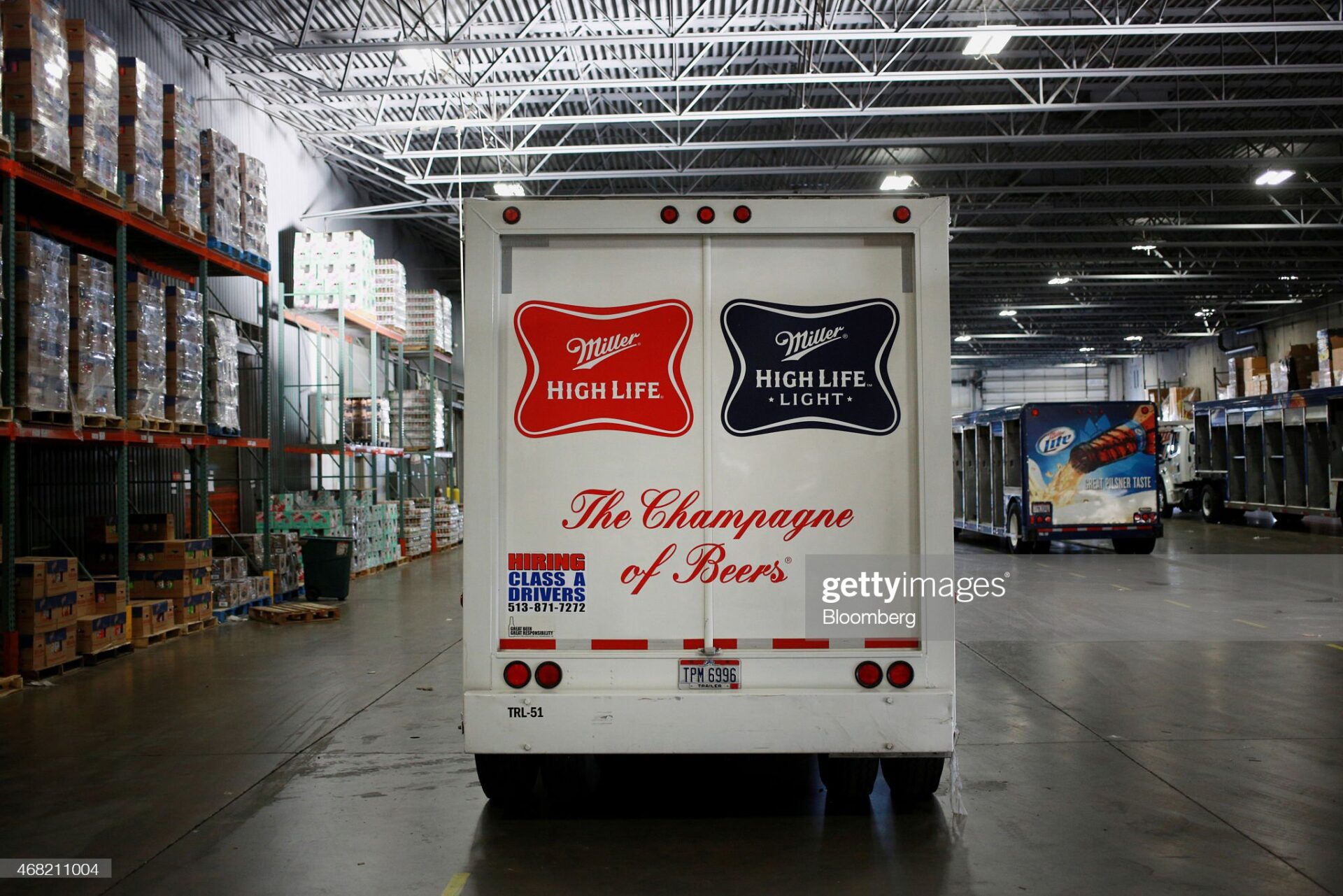
Operating at a large scale allows Miller High Life to spread its fixed costs over a larger output. Fixed costs, such as facility maintenance, equipment depreciation, and administrative expenses, are essential for any brewery. However, these costs can be significant barriers for smaller breweries to achieve cost efficiencies. By producing beer in large quantities, Miller can distribute these fixed costs over a greater number of units, lowering the cost price per unit.
Does Miller High Life Use Cheaper Ingredients?
Some would argue that Miller High Life’s cheaper cost is due to cheap, low-quality ingredients, although the beer would not have maintained its popularity over the years if this were true. Miller High Life enjoys a reputation as a high-quality domestic macro (adjunct) beer, almost like the Champagne of beers, you could say.
Miller Brewing prefers the term “cost-effective” ingredients, which help maintain the lower price of Miller High Life. While the brand prioritizes quality and taste, it strategically chooses ingredients that are relatively inexpensive compared to those used in premium beers. Here are some key factors that contribute to Miller High Life’s cost-effective ingredient choices:
Adjunct Grains
One of the primary ways Miller High Life achieves cost savings is by incorporating adjunct grains into its brewing process. Adjunct grains are supplemental grains used in addition to malted barley. Common adjunct grains include corn and rice.
These grains are less expensive than malted barley and can be used to replace a portion of the barley content without significantly affecting the flavor profile. By incorporating adjunct grains, Miller High Life can reduce its production costs while maintaining a light, crisp, and refreshing taste.
Bulk Purchasing of Ingredients
As a large-scale beer producer, Miller High Life has the advantage of purchasing ingredients in bulk. This allows the brand to negotiate favorable prices with suppliers and take advantage of volume discounts. By procuring ingredients such as malted barley, hops, and yeast in large quantities, Miller High Life reduces its overall ingredient costs, contributing to its affordability.
Local Sourcing
Miller High Life’s commitment to cost-effective ingredients extends to sourcing practices. The brand aims to source ingredients locally whenever possible, reducing transportation costs and supporting local economies. By working closely with regional suppliers, Miller High Life can access ingredients at competitive prices, eliminating the need for long-distance transportation and associated expenses.
Simplified Recipe
Another approach to cost-effective ingredients is to use a simplified recipe. By focusing on a streamlined set of ingredients, Miller High Life reduces the complexity of its brewing process and the number of ingredients required. This simplification not only lowers production costs but also contributes to consistency and efficiency in the brewing process. It allows Miller High Life to maintain quality control while optimizing costs, resulting in a more affordable beer.
Why Is Miller High Life So Cheap? – Final Call
Miller High Life is one of my favorites, if not my absolute favorite, of the lower-cost macro lagers of America. I, like many others, would much rather take a Miller High Life than a Budweiser or Bud Light when offered the option.
When you buy a Miller High Life it’s almost like you are getting that “Champagne” experience at a bargain basement price (yes, I know it’s not Champagne, the Belgians showed us that!). Maybe it’s the clever marketing of the “Champagne of Beer”, “It’s Miller Time” or even the iconic “Girl in the Moon”, but drinking High Life feels much classier than many other domestic mass-produced beers, and with the bonus of a cheap price too.

